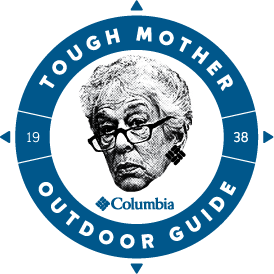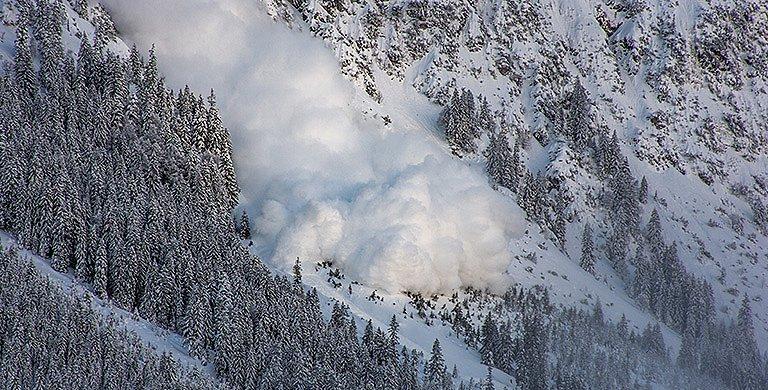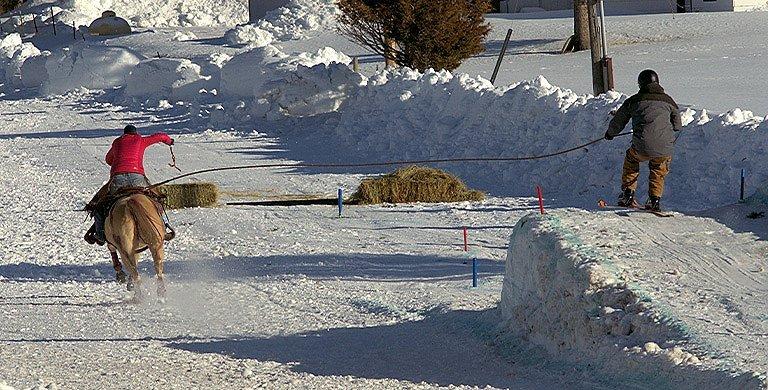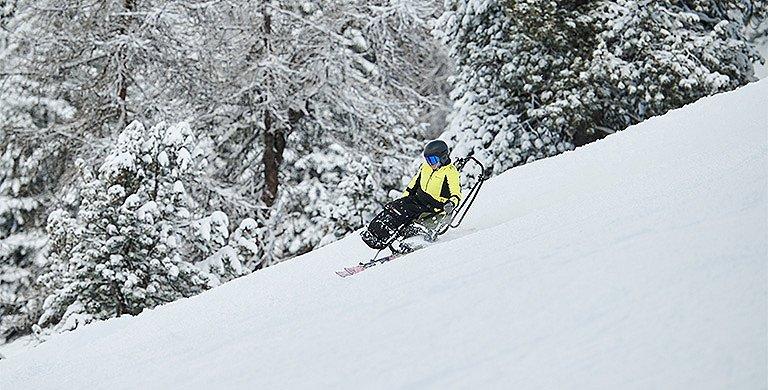SKI & SNOW
Bump and Run:
Tips for Tackling Moguls
BY NATHAN DINSDALE
Moguls are a common challenge for any skier or snowboarder venturing outside the smoothest of groomed runs. Whether these snowy obstacle courses inspire fear or delight for you, here are some tips for owning—or at least surviving—bump runs.
Know your frenemy
No two mogul runs are exactly alike. A lot of factors play a part—height and width of the moguls, steepness and length of the slope, snow conditions, amount of traffic that's passed through, etc. Here are the main two types:
- Natural: An organic mogul field forms after a high volume of skiers and boarders hit a particular stretch of a run. People tend to follow the same "lines" or routes down. As the spray from their turns builds up snow into mounds the narrow "troughs" around the mounds deepen, eventually creating a mini mountain range of moguls.
- Artificial: These are typically purpose-built runs with precise specifications for mogul skiing competitions. You're unlikely to encounter these—unless you take a really wrong turn—though the bump run could be left for general use after a competition ends.
Tackling moguls by accident
Whoops. You zigged when you meant to zag. Or you're a snowboarder. But now you're facing a minefield of snowy bumps and there's nowhere to go but straight through the belly of the beast. Here are some things to keep in mind:
Find your line. Come to a full stop before dropping in. Plan out your first 2-3 turns so you know where you want to go before you get there. As you descend, continue to gauge your route in small sections 2-3 turns ahead. Unlike a wide-open groomed run where you can make wide swooping turns, mogul runs require constant attention to navigate tight turns in narrow spaces.
Slow and steady. Bombing down a mogul field is a good way to end up on your backside—or your face. Control your speed to avoid pinballing down the mountain. Plotting ahead 2-3 moguls will help get you into a rhythm that you can follow all the way down.
Avoid the troughs. If moguls are tiny mountains, the troughs are the valleys around them. The natural tendency is to follow those high-traffic lines but doing so will only increase your speed—and decrease your control.
Aim for the apex. Don't go around the mogul, go over it. Navigate up the front side of the mogul to slow yourself down, then turn at the top and slide down the back side. Rinse, repeat.
When in doubt, bail out. If you pick up too much speed—or otherwise start losing control—traverse laterally and slightly uphill to slow yourself down and find a new line. Or come to a full stop to recalibrate.
Find your line. Come to a full stop before dropping in. Plan out your first 2-3 turns so you know where you want to go before you get there. As you descend, continue to gauge your route in small sections 2-3 turns ahead. Unlike a wide-open groomed run where you can make wide swooping turns, mogul runs require constant attention to navigate tight turns in narrow spaces.
Slow and steady. Bombing down a mogul field is a good way to end up on your backside—or your face. Control your speed to avoid pinballing down the mountain. Plotting ahead 2-3 moguls will help get you into a rhythm that you can follow all the way down.
Avoid the troughs. If moguls are tiny mountains, the troughs are the valleys around them. The natural tendency is to follow those high-traffic lines but doing so will only increase your speed—and decrease your control.
Aim for the apex. Don't go around the mogul, go over it. Navigate up the front side of the mogul to slow yourself down, then turn at the top and slide down the back side. Rinse, repeat.
When in doubt, bail out. If you pick up too much speed—or otherwise start losing control—traverse laterally and slightly uphill to slow yourself down and find a new line. Or come to a full stop to recalibrate.
Pro tip: If you want to get more comfortable hitting moguls, practice on a day with a few inches of powder. You'll find the bumps more forgiving and your speed easier to control.
Tackling moguls on purpose
You knew what you were getting into. You had an option to go left or right and you chose the path of most resistance. Doing so with some form and finesse takes practice and you're ready to get some. A few things to consider:
Plot the course. Make a plan, stick to the plan, adapt accordingly. Running a gauntlet of moguls in one fell swoop generally requires getting into a physical and mental rhythm you can follow all the way down. Find your line but be ready to adjust to what the mountain gives you.
Ups and downs. On a groomed run, your upper and lower body is generally in sync as you lean into wider turns. With moguls, allow your lower body more independence. Stay loose and flexible from feet to knees to hips while keeping your upper body stable and tilted slightly forward to absorb contact without losing control.
Center of balance. Keep your hips over your feet. If you're boots feel slightly behind you, you're likely in the right position. Resist the tendency to lean back as that leads to more speed and less control. Tighten your stance but keep loose flexion in your knees to serve as shock absorbers as you bounce down the hill.
Stay hands on. For skiers, keep your hands up and out in front of your rib cage to help keep your center mass forward. Dropping your hands to the side creates a lean-back tendency. Use pole touches on top of the moguls to help stabilize and control rotation as you turn.
Choose your adventure. The more experienced you are with moguls, the more options you have for how to tackle them. You can top-and-slide them, track a wider outside line skipping every other, an inside line cutting turns midway through the bump, or hit the troughs for the fastest—most technically challenging—route down.
However you take on moguls, when you reach the bottom feel free to take a moment to look back uphill at what you just did. That lingering burn in your quads is what victory feels like.
Plot the course. Make a plan, stick to the plan, adapt accordingly. Running a gauntlet of moguls in one fell swoop generally requires getting into a physical and mental rhythm you can follow all the way down. Find your line but be ready to adjust to what the mountain gives you.
Ups and downs. On a groomed run, your upper and lower body is generally in sync as you lean into wider turns. With moguls, allow your lower body more independence. Stay loose and flexible from feet to knees to hips while keeping your upper body stable and tilted slightly forward to absorb contact without losing control.
Center of balance. Keep your hips over your feet. If you're boots feel slightly behind you, you're likely in the right position. Resist the tendency to lean back as that leads to more speed and less control. Tighten your stance but keep loose flexion in your knees to serve as shock absorbers as you bounce down the hill.
Stay hands on. For skiers, keep your hands up and out in front of your rib cage to help keep your center mass forward. Dropping your hands to the side creates a lean-back tendency. Use pole touches on top of the moguls to help stabilize and control rotation as you turn.
Choose your adventure. The more experienced you are with moguls, the more options you have for how to tackle them. You can top-and-slide them, track a wider outside line skipping every other, an inside line cutting turns midway through the bump, or hit the troughs for the fastest—most technically challenging—route down.
However you take on moguls, when you reach the bottom feel free to take a moment to look back uphill at what you just did. That lingering burn in your quads is what victory feels like.
Want more outdoors? Connect with @Columbia1938 on Instagram. Or drop in on our skiing and snowboarding page.



